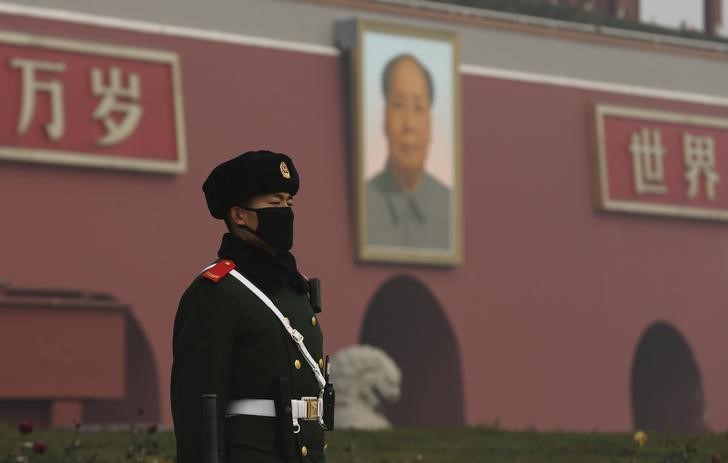(Bloomberg) -- The first glimpse into China’s economic plans for the next five and 15 years will be unveiled Thursday when initial details are released on how the country will steer growth and develop industry in the face of an antagonistic external environment.
China’s Communist Party is expected to release two policy blueprints at the end of four days of closed-door meetings in Beijing: Their usual five-year plan and a longer strategy document that stretches until 2035. Facing heightened tensions with the U.S. and a virus-battered world economy, officials in Beijing are expected to chart a course that draws on domestic resources and consumption to guarantee growth.
The party’s Central Committee -- a group of some 200 top leaders -- usually release a broadly worded communique that will be fleshed out in the coming weeks before approval by China’s parliament next year. The plan will focus on technological innovation, consumption, pollution control and more promises to continue opening the economy to foreign competition.
Unlike the last five-year plan, which sought to achieve “medium-to-high growth” in order to build a “moderately prosperous society,” this plenum is expected to focus on the quality rather than the pace of growth, possibly even abandoning GDP targets. Investors and businesses are watching for signals on policies that may shape global demand.
“China realizes now it is vulnerable,” said Wang Huiyao, an adviser to China’s cabinet and founder of the Center for China and Globalization, referring to sanctions levied on Chinese companies. “So leaders have to be prepared for things like technology decoupling.”
The plan will be geared toward how to “handle aggressive foreign politics towards China and Chinese companies,” according to Iris Pang, Greater China chief economist at ING Bank NV. “Funds are going to flow into companies that can show their abilities to foster top-edge technologies.”
Typically, a broad outline of the proposals is released at the close of the meeting. More details emerge in the week after when state media release a comprehensive development plan. The full picture won’t come to light until the national legislature puts its own stamp on the plan this coming spring.
What Bloomberg’s Economists Say
“Growth is on track to be the slowest in the reform era, blunted by a trade war with the U.S. and the coronavirus pandemic. Technological, demographic and climate challenges call for strategic policy re-alignment touching many aspects of the economy.”
Click here to read full report.
Chang Shu, chief Asia economist
China may also provide more concrete benchmarks to make good on the government’s pledge to build a “great modern socialist country” by the middle of the 21st century with 2035 as the mid-way mark. The flagship initiative of the last five-year plan was supply-side reform, which swept away swathes of outdated capacity in industries like steel and coal. The plan also set goals to make breakthroughs in key technologies and help China become a talent-rich country for innovation, initiatives ongoing geopolitical tensions are expected to accelerate.
Away from the headline announcements, there will be other microeconomic changes that may take longer to push through, said Helen Qiao, chief Greater China economist at Bank of America (NYSE:BAC).
“The directions of structural changes that the 14th five-year plan identifies will be the most important, although specific proposals of certain numerical goals or fiscal measures -- inheritance tax, property tax and so on -- may not be carried out within that time frame,” she said.
©2020 Bloomberg L.P.
